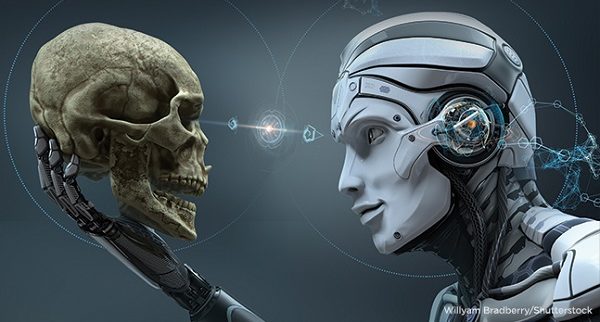As AI makes a lot of technological advances possible, it leaves some people in fears of clever robots coming to overtake humanity anytime soon. However, this misconception is a result of misinformation about the AI terms and their corresponding technological progress.
AI is divided into three areas: Artificial Narrow Intelligence (ANI), Artificial General Intelligence (AGI), and Artificial Super Intelligence (ASI).
- ANI – ability to mimic human intelligence to a narrow set of parameters
- AGI – ability to mimic human intelligence indistinguishable from a human
- ASI – ability to surpass human intelligence
Despite the multitude of AI innovations and technological breakthroughs, most of the progress in AI is attributed to ANI (Bhatia, 2018). Examples of ANI include voice recognition systems, self-driving vehicles, spam filter, recommendation systems of Google, Amazon or Netflix, etc. And thus, ANI is often called “one-trick ponies”, since they only work within a limited set of parameters.
AGI, on the other hand, represents a machine’s capacity to learn and understand any tasks a human can, and thus, is often called “human-like AI”. For decades researches have been claiming that AGI development is right around the corner but with every passing decade, they were proven wrong (Dickson, 2017). One of the popular approaches for AGI development is brain emulation, which is a process of building an analogue of the entire human brain into a computer system that will be able to simulate its activities similar to a human (Wikipedia.org, n.d.). However, the brain is a very complex system and we have insufficient understanding of higher cognitive processes in order to successfully build a model of it.
Overall, slow development in AGI can be attributed to many reasons. First of all, there are many views on how AGI is supposed to mimic human intelligence, and how to test it. Secondly, we still do not entirely understand how AI works. Also, researchers face conceptual limitations as AI requires understanding of multitude of areas. Furthermore, investments required for AGI development are substantial, and companies prefer to invest in ANI as its outcomes are more predictable and generally profitable.
So, at the moment, ANI is the ultimate AI and AGI and ASI are only existing as part of Sci-Fi. Overall, the predictions of the progress of AGI vary. Some researchers claim it will take 30 years, some of them tell it will take about 100 years, while some claim that it might never come true (Dickson, 2017).
References
Bhatia, R. (2018). AGI vs ANI & Understanding The Path Towards Machine Intelligence. [online] Analytics India Magazine. Available at: https://analyticsindiamag.com/agi-vs-ani-understanding-the-path-towards-machine-intelligence/ [Accessed 18 Oct. 2019].
Dickson, B. (2017). What is Narrow, General and Super Artificial Intelligence. [online] TechTalks. Available at: https://bdtechtalks.com/2017/05/12/what-is-narrow-general-and-super-artificial-intelligence/ [Accessed 18 Oct. 2019].
Wikipedia.org. (n.d.). Artificial general intelligence. [online] Available at: https://en.wikipedia.org/wiki/Artificial_general_intelligence [Accessed 18 Oct. 2019].


Hello Viktoria,
Thanks for the interesting insights about AI. I did not know about this kind of classification for AI. I agree with most of your view and research results you presented. However, there is also a few points I do not fully agree with.
1. You mentioned that the reason why brain emulation for AGI development is that “the brain is a very complex system and we have insufficient understanding of higher cognitive processes in order to successfully build a model of it. ” I personally think this should not be the main reason anymore with the ongoing development of machine learning. As we learned from the week 1 article “The Business of AI: What it can — and cannot — do for your organization” by Erik Brynjolfsson and Andrew Mcafee, machine learning is different from software engineering that developers/designers have to program all the operations. Machine learning trains AI to learn how to make judgments and decisions by giving training examples. It’s more like how human kids are learning about the world, learning from all kinds of examples in the world.
2. Another reason you mentioned for the slow development of AGI is that “we still do not entirely understand how AI works”. I think this statement is not very accurate because, in my view, we cannot understand AI any better than right now. It is a emerging problem that AI becomes more complicated as it develops and the designer themselves start to not understand how AI makes their decisions. This problem will only become more severe as the AI keeps advancing.